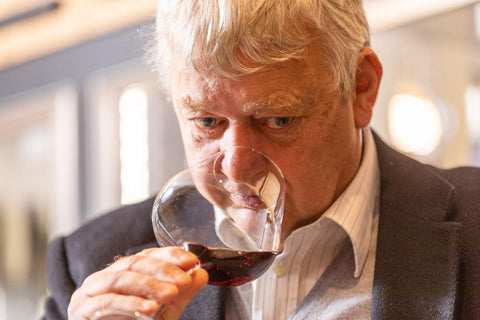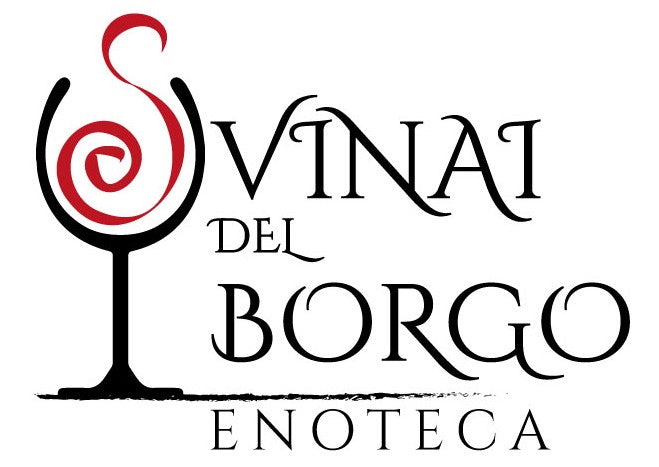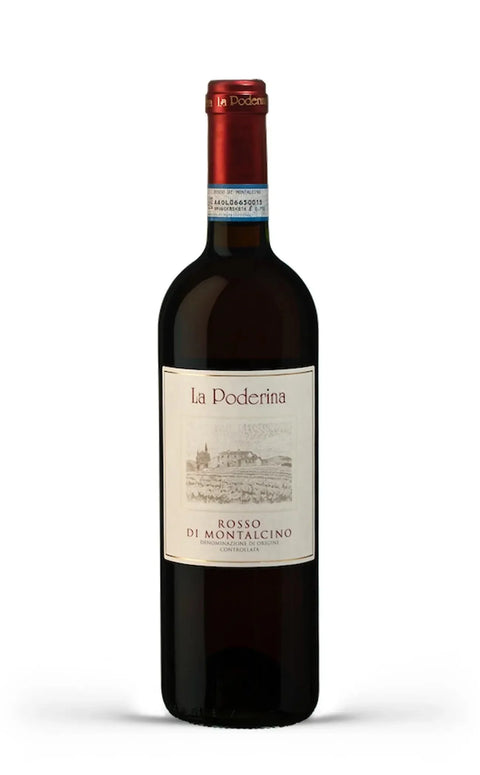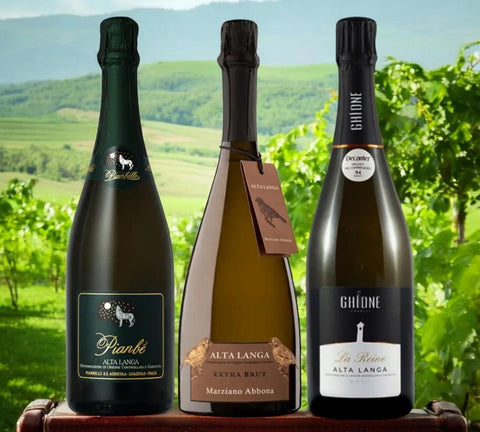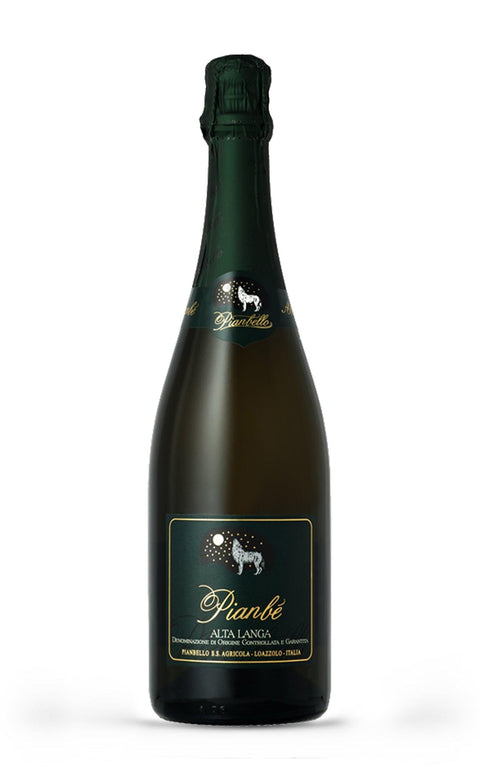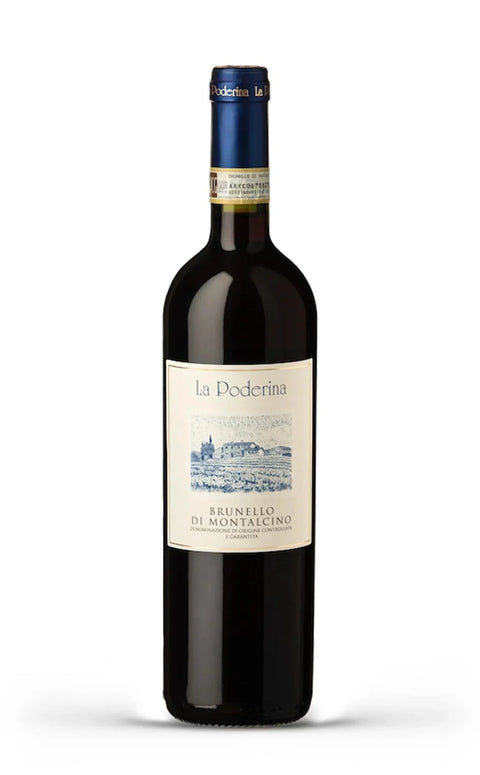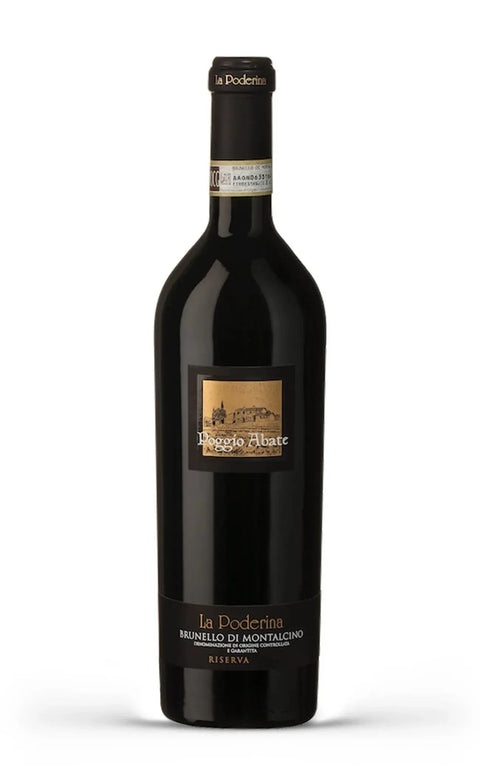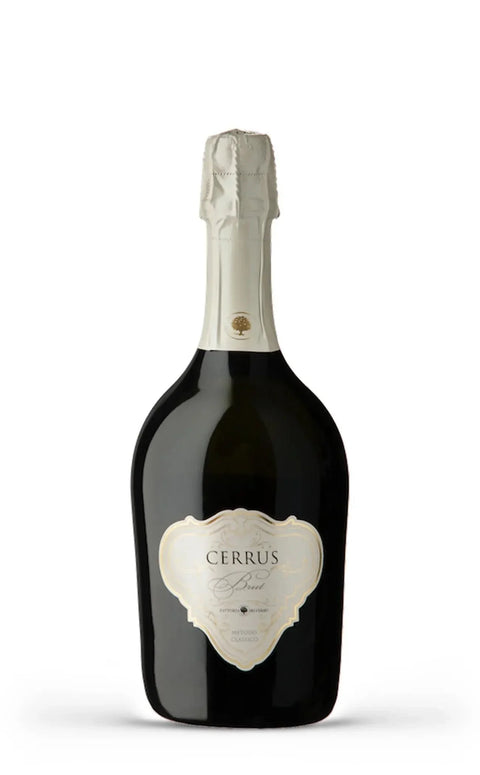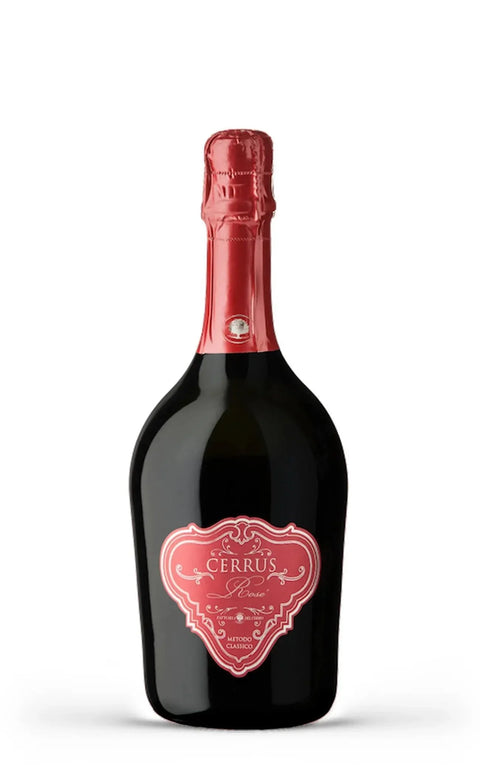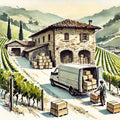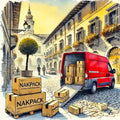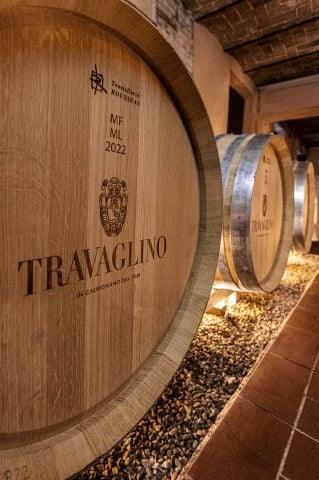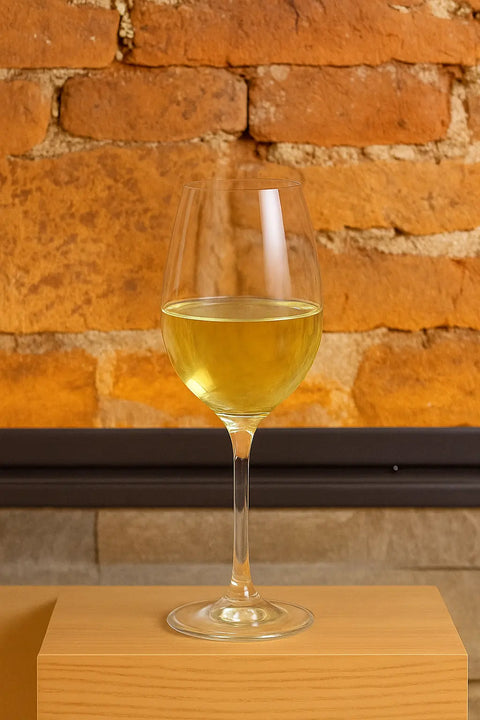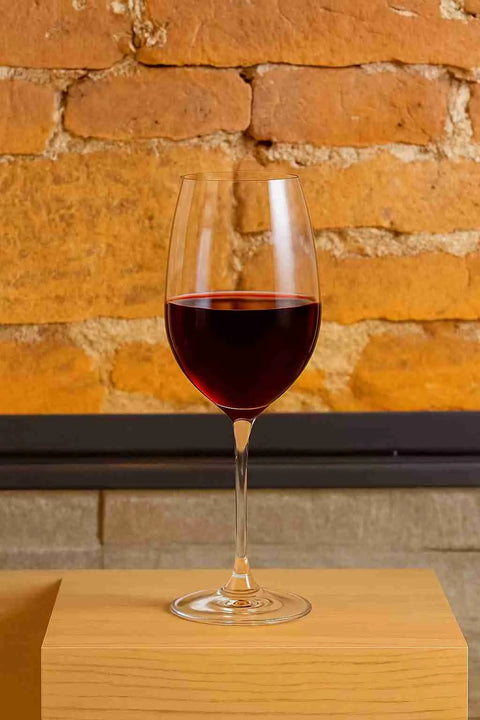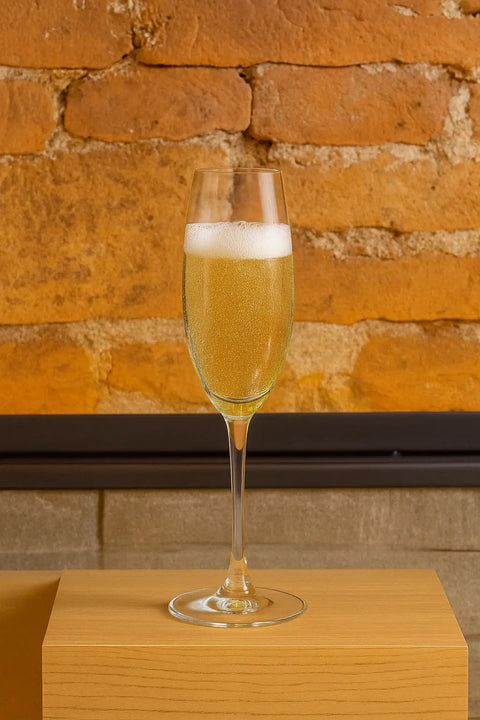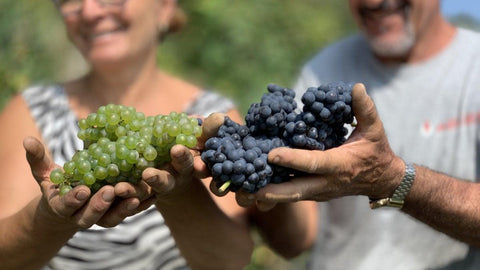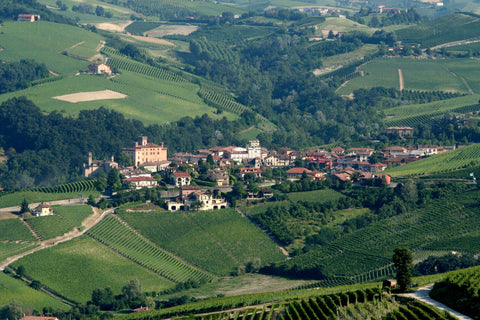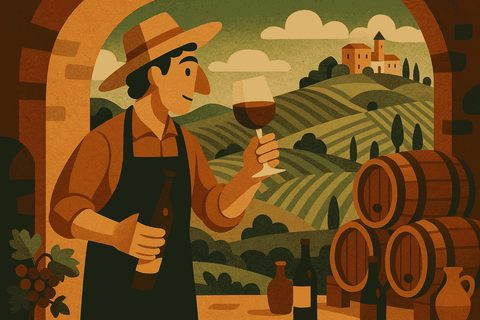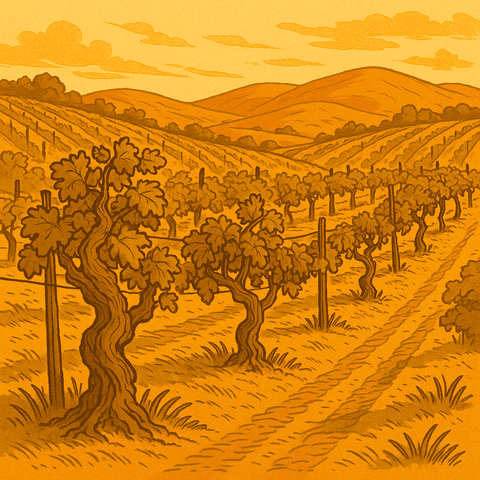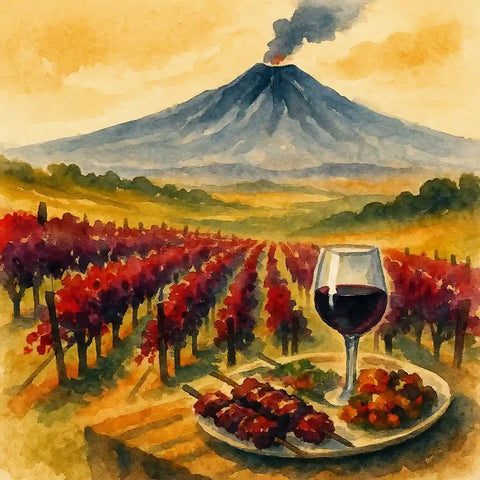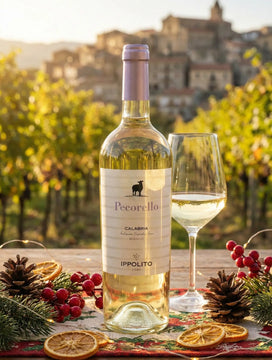Winemaking techniques and technical terms for red wines
Fermentation on the skins
A key process in the vinification of red wines, during which the must remains in contact with the skins to extract colour, tannins and aromas.
Fermentation temperature
In reds it is higher than in whites, usually between 24°C and 30°C, to facilitate phenolic extraction and yeast activity.
Maceration
Phase in which the skins, seeds and sometimes stalks remain in contact with the must. It can last from a few days to weeks, influencing body and color.
Delestage
Technique that consists of decanting the must and then putting it back on the skins to oxygenate it and increase the extraction of color and tannin.
Fulling
Break the “cap” of grape marc that forms during fermentation, to facilitate contact between the must and the skins and improve extraction.
Reassembly
Operation of taking the must from the bottom of the vat and spraying it on the cap. It serves to oxygenate and improve the extraction of noble substances.
Red winemaking
Classic method for reds, which includes fermentation with the skins, extraction of color and tannins, and aging in neutral or wooden containers.
Malolactic fermentation
Transformation of malic acid into lactic acid, which makes the wine softer and more stable. Essential for most red wines.
Refining in wood
Common practice for structured reds. It can be done in barriques, tonneaux or large barrels and contributes to aromatic evolution and softness.
Refining in cement
Alternative to wood or steel. Concrete is neutral, but breathable, and promotes micro-oxygenation without affecting the aroma.
Refining in steel
Used for fresher and fruitier red wines, it allows to preserve the aromatic purity and does not add tertiary notes.
Natural decantation
Separation of sediments without forced filtration. Typical of artisanal or unfiltered reds.
Filtration
Technique to clarify and stabilize wine before bottling. Unfiltered wines can be more expressive but less stable.
Cutting (assembly)
Blending of wines from different vines or parcels, to obtain balance, complexity or comply with production specifications.
Micro-oxygenation
Controlled introduction of oxygen during refinement, useful for softening tannins and improving colour stability.
Controlled oxidation
Light contact with oxygen during maturation, which contributes to the development of tertiary aromas in longer-lived reds.
Reduction
Opposite to oxidation. It can cause unpleasant odors (egg, sulfur), but a little reduction can protect wines during aging.
Unfiltered wine
Wine bottled without filtration may appear slightly cloudy and more expressive, but less stable in the long term.
Biodynamic wine
Produced according to the principles of biodynamics, with practices that follow the lunar calendar and aim to strengthen the bond with the terroir.
Natural wine
Wine produced with minimal intervention, indigenous yeasts, no or little added sulfur. Expressive but sometimes unstable.
Italian red vines
Nebbiolo
Noble Piedmontese grape variety, base of Barolo and Barbaresco. Tannic, long-lived, with aromas of rose, spices, undergrowth and licorice.
Sangiovese
The most cultivated red grape in Italy, the basis of Chianti, Brunello, Morellino. Elegant, with notes of cherry, earth and violet.
Montepulciano
A robust and dark Abruzzo grape variety, which produces full-bodied and fruity wines, with soft tannins and excellent structure.
Aglianico
Grape variety from Southern Italy, especially in Campania and Basilicata. Tannic, austere, suitable for long aging.
Barbera
Lively Piedmontese grape, with a sharp acidity and aromas of red fruit, flowers and sweet spices. Easy to drink or even structured.
Sweet treat
Langhe grape variety for fresh wines, with low acidity and a slightly bitter finish. Notes of cherry and almond.
Black d'Avola
Versatile and powerful Sicilian grape, with aromas of black cherry, plum and spices, suitable for warm climates.
Frappato
Fresh and light Sicilian grape variety, with floral and fruity notes, the basis of Cerasuolo di Vittoria.
Cannonau
Sardinian name for Grenache, it produces soft, alcoholic and spicy wines, with ripe fruit and Mediterranean herbs.
Refosco
Rustic and intense Friulian grape variety, with marked tannins and hints of blackberry, herbs and spices.
Teroldego
Native to Trentino, with medium body, dark fruit and lovely freshness. Excellent for young and fruity wines.
Tear
Aromatic grape variety from the Marche region, with intense aromas of rose, strawberry and violet. Unique and fragrant red wine.
Lambrusco
Family of Emilian vines for sparkling and fresh red wines, to be drunk young. Notes of red fruit and flowers.
Little gun
Spicy Friulian grape, with lively tannins and aromas of black pepper, berries and violets.
Raboso
Rustic and tannic Venetian grape, suitable for aging. Aromas of red fruit in alcohol and spices.
Troy Grapes
A noble Apulian grape variety, it produces structured and fragrant wines, with fine tannins and hints of blackberry and pepper.
Sagrantino
Umbrian grape with extreme power, with abundant tannins and aromas of licorice, leather, chocolate and plum.
Raven
Base grape of Amarone and Valpolicella. Elegant, with hints of cherry, spices and black cherry.
Picky
Rare Friulian vine with a strong character, full body, tannic structure and long persistence.
Color
Tuscan grape used in blends to give color and tannin. Sometimes vinified in purity for intense and spicy reds.
Merlot
International grape variety spread throughout Italy. Soft, fruity, with round tannins and notes of plum and chocolate.
Cabernet Sauvignon
Robust and tannic grape, often used in blends with Merlot or Sangiovese. Aromas of cassis, green pepper and graphite.
Cabernet Franc
A relative of Sauvignon, it produces elegant, spicy and floral wines. Excellent in blends or pure in cool climates.
Syrah
International grape that expresses itself well in Sicily and Tuscany. Notes of black pepper, violets and black fruits.
Petit Verdot
Powerful and spicy grape, used in blends to add structure, color and aromatic intensity.
Grenache (Cannonau)
Warm and generous grapes, with high alcohol and notes of strawberry, sweet spices, Mediterranean herbs. Typical of Sardinia.
Pinot Noir
Noble and difficult vine, expressive in Alto Adige and Oltrepò. Elegance, acidity and notes of red fruits and undergrowth.
Lagrein
Native to South Tyrol. Dark color, sweet tannins, aromas of blackberry and spices. Also excellent as a rosé (Kretzer).
Primitive
Intense and alcoholic Apulian grape, with notes of black cherry, spices and jam. Relative to Zinfandel.
Susumaniello
Rediscovered grape variety of Salento. It gives full-bodied, fruity and spicy wines, often used in blends.
Magliocco
Structured Calabrian grape, with strong tannins and aromas of licorice and black pepper.
Redfoot
Neapolitan grape, soft and floral, often blended with Aglianico in the Campi Flegrei.
Old House
Ancient Campanian vine, vigorous and with great structure, with aromas of dark fruits and spices.
Black Pallagrello
Native to the province of Caserta. Elegant and spicy, with good acidity and freshness.
Gentle Malbo
An intensely colored Emilian grape variety, often used to enhance Lambrusco or blend with Barbera.
Black Canaiolo
Traditional blending grape of Chianti. Fruity, soft and with little acidity.
Bashful
Secondary Tuscan grape variety, known for its floral aromas, particularly violets.
Alicante
Grape variety of Spanish origin grown in Maremma and southern Italy. Intense color and marked spiciness.
Cesanese
An important Lazio grape variety, with sweet tannins and aromas of black fruits and spices.
Blackberry
Secondary grape of Valpolicella. Adds color and structure to the blend with Corvina and Rondinella.
Swallow
A Veronese variety, resistant and productive. An essential part of Valpolicella and Amarone wines.
Milling
Grape variety used in Veronese blends to give freshness and acidity. Pale color and good drinkability.
Rossese
Elegant and delicate Ligurian grape variety, with notes of small red fruits and aromatic herbs.
Brachetto
Aromatic Piedmontese grape used for sweet and sparkling red wines. Notes of rose, strawberry and mint.
Grignolino
Piedmontese, fresh and spicy, with marked tannins and pale color. Traditional and charming.
Ruche
Rare vine from Monferrato. Aromatic, floral and spicy, with scents of rose and white pepper.
Small Peeler
Native to Verduno, with a distinctive aroma of black pepper and wild strawberry. Elegant and unique.
Goodard
Common name for several grapes, in Oltrepò it is Croatina. Sparkling or still wine, fruity and easy to drink.
Croatina
Used in Lombardy and Piedmont. Intense color, medium body, evident tannin.
Albarossa
Cross between Barbera and Nebbiolo di Dronero. Good structure, deep color, suitable for aging.
Big Rabit
Rare Ligurian grape variety, used for medium-bodied red wines with good acidity and fresh aromas.
Tintlia
Native vine of Molise, with a spicy and fruity profile, capable of good longevity.
Bovale
Dark and tannic Sardinian grape, often used in blends. Notes of dark fruit and earth.
Pignatello (Perricone)
Sicilian rustic and deep, also used for Marsala. Irony, spicy notes, with excellent potential.
Gaglioppo
Structured Calabrian grape, with important tannins and aromas of Mediterranean scrub and black cherry.
Black Cappuccio
Complementary grape to Nerello Mascalese on Etna. Gives color and softness to the blend.
Nerello Mascalese
Prince of Etna vines. Elegant, mineral, floral, with extraordinary aging potential.
Red Mount of Grace
Traditional Campania blend with Tintore, Piedirosso and Moscio grapes. Rare, authentic and artisanal.
Red Vespa
Minor variety grown in Veneto. Fresh, spicy wines with red fruit aromas.
Blauburgunder
Synonymous with Pinot Noir in Alto Adige, known for elegant, subtle and complex wines.
Corvinone
Often confused with Corvina, but more productive. Adds softness and structure to Valpolicella.
Sciascinous
Light Neapolitan grape, used in Lacryma Christi blends. Fruity, floral and easy to drink.
Moorish
Ancient native Tuscan vine, almost extinct, recovered for rustic and typical wines.
Cherry tree
Tuscan grape variety - fruity and floral, often blended with Sangiovese, but also vinified on its own.
Black Pollera
Ligurian grape variety with delicate aromas and light spiciness. Not very widespread, but with character.
Reddish
Rare Trentino native, medium bodied, earthy aromas and good acidity. Traditional but little known.
Tocai Red
Alternative name for Grenache in Veneto, used for young, fruity, easy-drinking reds.
Main Italian denominations of red wines
Barolo DOCG
One of the most prestigious denominations in Italy. Pure Nebbiolo grown in the Langhe, known for its elegance, structure and aging capacity.
Barbaresco DOCG
Nebbiolo denomination in the province of Cuneo. More accessible than Barolo when young, but equally fine and long-lived.
Brunello di Montalcino DOCG
Tuscan wine from pure Sangiovese, aged for a long time. Elegance, power and longevity make it iconic.
Nobile di Montepulciano DOCG Wine
Tuscan red from Sangiovese (Prugnolo Gentile), with structure, balance and a distinct character.
Chianti Classico DOCG
Historic Chianti area, between Florence and Siena. Predominantly Sangiovese, with fruity, spicy profiles and excellent drinkability.
Chianti DOCG
Broad denomination covering much of central Tuscany. Sangiovese wines of varying styles, from everyday to structured.
Morellino di Scansano DOCG
Sangiovese from the Tuscan Maremma. Sunny, soft and fruity wines, often versatile and gastronomic.
Carmignano DOCG
Historic Tuscan wine area where Sangiovese is flanked by international vines. Balance between tradition and innovation.
Bolgheri DOC
Area of the Tuscan coast famous for the Supertuscans. Bordeaux blends with Merlot, Cabernet and Sangiovese, elegant and structured.
Amarone della Valpolicella DOCG
Dry red wine obtained from dried grapes. Full-bodied, alcoholic and soft, rich in ripe fruit and spices.
Valpolicella Ripasso DOC
Venetian red obtained by refermenting Valpolicella on Amarone pomace. Medium structure, intense aromas and enveloping taste.
Valtellina Superiore DOCG
Nebbiolo (Chiavennasca) grown on Alpine terraces in Lombardy. Fine, elegant, long-lived wines.
Valtellina DOCG Sforzato
Wine from dried Nebbiolo grapes, produced in the mountains. Powerful, spicy and unique for its freshness and strength.
Aglianico del Vulture DOCG
Lucanian red wine from Aglianico. Tannic, spicy, mineral. Excellent evolutionary potential.
Taurasi DOCG
“Barolo del Sud”. Aglianico from Campania with great structure, aged for a long time. Elegant, austere, long-lived.
Cannonau of Sardinia DOC
Sardinian red wine from Cannonau. Soft, spicy, rich in fruit. It represents the Mediterranean identity of the region.
Etna Red DOC
Nerello Mascalese and Cappuccio grown on volcanic soils. Tense, elegant wines with unique minerality and freshness.
Ciro DOC
Calabrian denomination from Gaglioppo grapes. Intense, spicy wines with excellent acidity and rustic character.
Red Montalcino DOC
Younger and fresher version of Brunello. Direct but always elegant style, with good gastronomic potential.
Trentino DOC Marzemino
Fruity and light red from Trentino, from Marzemino grapes. Also famous for being mentioned in Mozart's Don Giovanni.
Friuli Colli Orientali DOC
Versatile denomination with various reds from native (Refosco, Schioppettino) and international varieties.
Colli Piacentini DOC
Emilian area with local varieties such as Barbera and Bonarda. Often sparkling wines, light and convivial.
Oltrepò Pavese DOC
Lombardy region with Barbera, Croatina and Pinot Noir. Sparkling wines, ready-to-drink reds and quality spumante.
Sicilian Lands IGT
Geographical indication that includes most of the Sicilian production, from full-bodied reds to international blends.
Salento IGT
Apulian area famous for Primitivo and Negroamaro. Powerful, warm and fruity wines, often with an excellent quality/price ratio.
Toscana IGT
Category that includes the famous “Supertuscans”, wines from international grape varieties and/or without disciplinary constraints. Often high profile.
Colli di Luni Red DOC
Denomination between Liguria and Tuscany. The reds from Sangiovese, Ciliegiolo and other local vines are fragrant, spicy and versatile.
Red Conero DOC
Marche wine from Montepulciano alone or with Sangiovese. Dark color, full body, aromas of black cherry and spices.
Red Piceno DOC
Blend of Montepulciano and Sangiovese. Balanced and fruity wine from the Marche region, also suitable for aging in the “Superiore” version.
Colli Euganei Red DOC
Red wines from the Veneto hills with Merlot, Cabernet and native vines. Versatile, often fruity with good structure.
Carso Red DOC
Area of Friuli-Venezia Giulia on the border with Slovenia. Refosco, Terrano and other vines produce mineral wines with great personality.
Tear of Morro d'Alba DOC
Aromatic and floral red from the Marche region, unique for its intense notes of rose and violet. Drink young.
Colli Tortonesi DOC
In addition to the white Timorasso, the area produces Barbera and Croatina in red versions, often intense and spicy.
Colli Berici Red DOC
Venetian denomination that includes local and international varieties. The reds are soft, spicy and well-structured.
Boca DOC
Historic denomination of north-eastern Piedmont, based on Nebbiolo, Vespolina and Uva Rara. Long-lived, austere and complex.
Gattinara DOCG
Piedmontese Nebbiolo from Valsesia. Great elegance, solid tannins and longevity. A more northern alternative to Barolo.
Ghemme DOCG
Nebbiolo dell'Alto Piemonte. Austere, mineral wines, with vibrant tannins and excellent evolutionary potential.
Ossola Valleys DOC
Mountain denomination in Piedmont. Red wines from Nebbiolo, Croatina and Merlot, fresh and mineral.
Terrano DOC
Typical vine of the Carso, intense and lively red, with pronounced acidity and aromas of berries and spices.
DOC
Veneto area that enhances Raboso Piave and Friularo. Structured reds with aging potential.
Barbera del Monferrato DOC
Wider denomination of Piedmontese Barbera. Lively, fruity wines, also sparkling in the “vivace” typology.
Reggio Emilia Lambrusco DOC
One of the main production areas of Lambrusco. Sparkling red wines, fresh and convivial.
Serrapetrona DOCG
Unique DOCG with sparkling red wine from Vernaccia Nera. Three fermentations and an aromatic and spicy profile.
Canavese Red DOC
Piedmontese appellation where Nebbiolo, Barbera and other local grapes produce balanced, medium-bodied wines.
Alghero Red DOC
Sardinian area that includes international varieties such as Cabernet and Merlot, often blended with Cannonau. Structured and Mediterranean wines.
Mandrolisai DOC
Sardinian red from traditional blends (Bovale, Cannonau, Monica). Rich, spicy, authentic.
Monica of Sardinia DOC
Native vine of the island. Soft, fruity and pleasant wines, often ready to drink.
Capalbio Red DOC
Tuscan denomination of Maremma, with Sangiovese and international wines, often soft and sunny.
Montefalco Rosso DOC
Umbrian blend with Sangiovese and Sagrantino. Intense, spicy wine with good aging potential.
Valdarno di Sopra DOC
Small Tuscan denomination that enhances local varieties and international blends. Elegant and well-structured wines.
Tasting notes of red wines
Tannic
Term indicating the presence of tannins, which give the wine structure, a sensation of astringency and the ability to age.
Soft
Taste sensation given by alcohol, glycerin and low tannin. In reds, the softness balances the structure and makes the sip more velvety.
Silky
Fine and smooth texture on the palate, with sweet and integrated tannins. Typical of elegant and well-aged reds.
Structured
Wine with body, tannins and alcohol well present. It requires robust dishes or refinement to express itself at its best.
Balanced
Wine in which the taste components (alcohol, acidity, tannins, body) are harmonized without overpowering.
Heat
Warmth on the palate due to alcohol. It is common in full-bodied reds, but must be balanced.
Full-bodied
Wine with a sensation of fullness in the mouth, given by alcohol, dry extract and overall structure.
Light
Red with an agile structure, moderate tannins, suitable for everyday consumption or simple dishes.
Tasty
Taste sensation that recalls minerality or salinity, typical of some red wines from calcareous or marine soils.
Enveloping
Full and round sensation in the mouth, with a sip that expands without edges. Characteristic of well-matured or wood-aged reds.
Persistent
Duration of taste sensations after swallowing. Important red wines often have a long aromatic and gustatory persistence.
Long finish
The flavor of wine remains perceptible long after ingestion. It is an indicator of quality and depth.
Bitter finish
A slightly bitter aftertaste, due to tannins or the type of grape. It is often part of the character of the wine, especially in young reds.
Acidity
Component that gives freshness and verticality. In reds it balances the body and helps evolution over time.
End
Sensation of elegance, precision and delicacy in the sip, even if intense. Typical of great wines.
Rustic
A straightforward wine, sometimes edgy, but authentic. Typical of some reds from native vines that are not too smooth.
Astringent
Tactile sensation of dryness in the mouth due to abundant and not yet smoothed tannins. Common in young or structured reds.
Fruity
Taste dominated by red or dark fruits (cherry, blackberry, plum). Very common in young reds.
Spicy
Tasting notes reminiscent of pepper, cloves, cinnamon, deriving from the grapes or from the aging in wood.
Evolved
Mature wine, which has lost its fresh fruity notes to acquire hints of leather, tobacco, earth, mushrooms or licorice.
Aromatic notes of red wines
Red fruits
Aromas of cherry, strawberry, currant and raspberry, typical of young and light wines.
Black fruits
Aromas of blackberry, plum, blueberry and black cherry, present in the more mature or structured reds.
Floral notes
Hints of violet, rose, peony, often associated with wines made from Nebbiolo or delicate vines.
Spicy notes
Aromas of black pepper, cloves, cinnamon, vanilla or nutmeg, given by grapes or wood.
Toasted notes
Aromas of coffee, cocoa, tobacco or burnt wood, often resulting from aging in barriques.
Balsamic notes
Fresh aromas reminiscent of eucalyptus, menthol, resin or licorice, typical of some evolving reds.
Earthy notes
Aromas of humus, wet earth, undergrowth. Often in evolved wines or from mineral terroirs.
Animal notes
Hints of leather, game or fur, linked to long refinements or spontaneous fermentations.
Ethereal notes
Aromas of evolved alcohol, enamel or ink, present in very aged or full-bodied reds.
Mineral notes
Shades of graphite, iron, flint, associated with red wines from volcanic or rocky soils.

